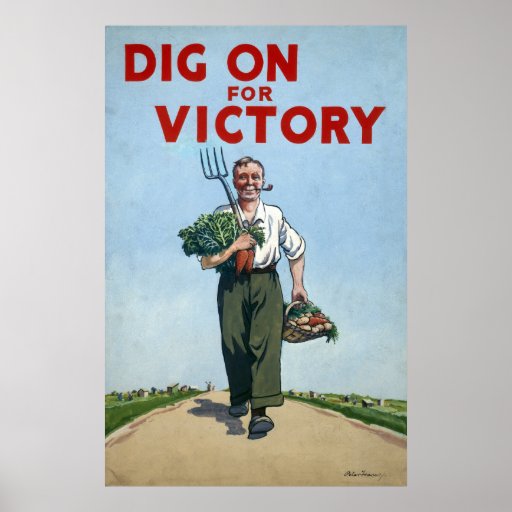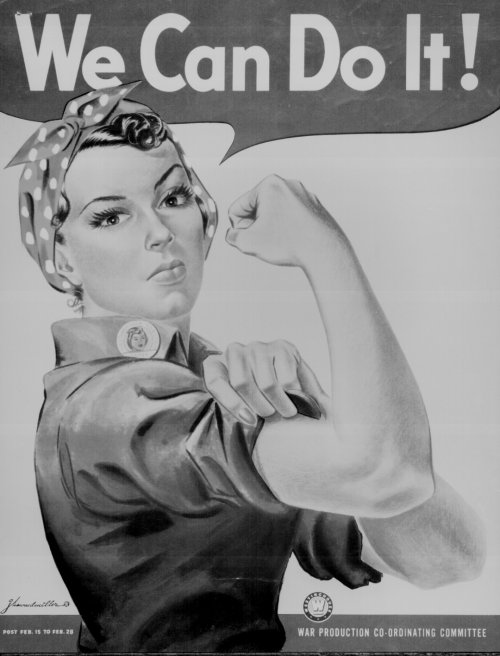As World War II began to rage across Europe and the Pacific, communication technology had spread to most of the world. Radio and recording allowed a unified soundtrack of the conflict shared across continents and oceans. Both sides of the war began to practice the art of propaganda in an effort to inspire their people or demoralize their enemies. Music played an important role in this effort to control the hearts of the populace as each country strove to find their musical voice during the war.
The war era saw the birth of many pieces in the “Great American Songbook”. The power of American popular music in the late 30s and early 40s cannot be ignored. Jazz, swing and the big band sound became a part of the culture in both hemispheres. And the United States was in a unique position as its artists and musicians were seemingly in agreement with their government to see the conflict end quickly and bring their soldiers home.
The United Kingdom was, in some ways, forced to embrace the dance, jazz and big band music that was coming from across the pond. They began to relax the programming of the BBC so that their young soldiers were not seduced by the radio waves coming from German-occupied Europe.
(National Museum of American History / public domain) The World War II posters were not only a highly visible part of the war but a highly important one. So much so that General George C. Marshall, Army chief of staff, the man to whom the supreme commanders in Europe and the Pacific reported, had to approve each poster. Silhouette vector drawing of soldier for World War II. Black and white portrait of soldier. World war 1 soldier clipart free world world war ii vector revolutionary war soldier clip art common domain clip art civil war soldier free civil war soldier clipart civil war soldier clipart. World War Ii Memorial. Monument World War Ii. Richard Nixon Pop Art. Etretat Sea France. Poland Auschwitz. Kz Dachau Memorial.
Germany enforced a strict ban on anything the Nazi party considered “unfit” for its people. Works of modernism, impressionism or expressionism were forbidden as the Nazi regime sought to project German art as the pinnacle of society. They approved of the works of German masters such as Beethoven, Bruckner and Wagner and demonized the music of Korngold, Schoenberg and Webern, largely on racial lines.
However, even in Nazi Germany there was an undercurrent, a subculture that embraced the jazz and big band sound coming from the west. By the end of the war, Goebbels commissioned a Nazi swing band called “Charlie and his Orchestra” in an effort to win the propaganda war.
Japan and Russia both embraced the power of the vocal song as a lyrical expression of patriotism. Japan also utilized radio broadcasts as means of demoralizing the Allies in the South Pacific, creating a personality the troops called “Tokyo Rose”. Stalin arranged to have Shostakovich’s '7th Symphony' performed behind enemy lines and broadcasted during the siege of Leningrad.
The power of music to influence thought and culture has been long understood. But the 20th century allowed for a single song, a single performance of a single song, to be broadcasted to every corner of the globe. After World War II the world of music was much smaller giving way to the explosion of popular music in the next few decades.
Timeline is an exploration into the development of Western music. Listen through the Timeline on our new web app.
During World War Two, Britain wanted all men and women to help win the war. Like the armed services, the people at home had to do their bit too. The government used posters, leaflets, film and radio broadcasts to get its message over to the public. There was no television or internet in those days.
In this lesson you are going to look at some posters and a film clip from World War Two. These sources show how the government encouraged people to salvage certain materials for the war and pointed out the dangers of ‘careless talk’.

Posters were put up in shops and shop windows, council buildings and village halls. Different posters were used to put over different messages. For example, the famous ‘Dig for Victory’ posters were used as the government wanted people to grow their own food during wartime.
Special government films shown in cinemas were also used to persuade people to behave in certain ways.
The sources used in this lesson show how the government hoped to get people at home to play their part in the war.
Key words:
Salvage: collecting and reusing or recycling waste material
Persuade: to try and change a person’s mind or way of thinking
Slogan: catchword or catch phrase, such as ‘Dig for Victory’
Tasks
1. Look at Sources 1, 2, 3 and 4. Explain how each of the salvage posters uses the following ways to persuade people to save waste.
- How do the posters use slogans?
- Do they use powerful/forceful words?
- Do they appeal to feelings and emotions?
- How do the posters use humour?
- How do the posters use different font sizes?
- How do the posters use colour to help make their point?
- Which do you think is the most persuasive poster? Give your reasons, using the questions above to help
- Are the posters aimed at different types of audience (men, women, children or all groups)?
2. Look at Sources 5, 6, 7, 8 and 9 and answer the questions below.
- List the situations in which you must be careful about what you say
- Which poster warns about being careful who to trust? Can you explain how the poster makes this clear?
- Which posters show the results of ‘careless talk’?
- Are the posters aimed at different types of audience (men, women, children or all groups)?
- Which do you think is the most persuasive poster? Give your reasons, use the questions from task 1 to help
3. Look at Source 10. This is a film called ‘All Hands’ made in 1940. Answer the questions below.
The film shows two women who work at a railway station restaurant and they are busy chatting. They give away a lot of information that would have been very useful if overheard by an enemy spy.
- What jobs do these women do in the film?
- What are they talking about?
- How does the film make clear that they should not talk in this way?
- Does the film closely match any of the ‘careless talk’ posters you have looked at?
- Why do you think the film is called ‘All Hands’?
- Do you think that the film or the posters are more effective in warning people about the dangers of ‘careless talk’? Give your reasons
Background

All of the posters used in this lesson are the work of artists who worked for the government Ministry of Information formed in 1939. The posters were used to try and influence public opinion.
For example, people were encouraged to grow their own food, and save waste. This was because it was difficult to import food from other countries during wartime. Kitchen waste could be fed to hens and pigs. People were asked to salvage as many materials as they could. Wastepaper, metal or bones could be made into planes and ammunition.
Travel within Britain was to be limited at all times. Posters with the slogan ‘Is your journey really necessary?’ were used to remind people to save fuel and allow trains to transport soldiers and war supplies instead.
Some posters encouraged women to work in factories to make weapons or planes. Others called women to join the Land Army to work on farms ‘for a healthy, happy job’.
The Ministry of Information was also keen to explain to the people the danger of ‘careless talk’. They wanted the public to become much more careful about security because information or secrets might be used by enemy spies listening in.
Posters were also used to up keep morale or wartime spirit. They made it clear that everybody was in this war together and everybody had an important part to play. This also helped the public to feel involved. This really mattered if Britain wanted the workers in the factories to make as many planes, bombs, and tanks as they could or farmers to grow as much as possible.
During the Second World War, the people faced many dangers such as the bombing of cities, ports and factories. They also had accidents caused by the blackout. Health during the war was a big worry for Britain. The public needed to keep fit and healthy in order to work and keep up production in the factories and on the land. Therefore the Ministry of Information produced many posters on these subjects.
Teachers' notes
This lesson can be used to support the Primary Framework in Literacy for Key stage 2, unit 3 Non-fiction: Persuasive writing. Students can explore how the language of these government posters is used to persuade. They can look in detail at persuasive devices such as slogans, humour and emotive language. They can consider how persuasive language is used to gain attention, influence and inform and can be adapted for different audiences and purposes.

The lesson could serve as an introduction to the concept of government propaganda within the literacy or history classroom for Key stage 2. Students could be encouraged to use a dictionary to find the meaning of propaganda, then discuss whether these posters help explain the term.
Using these sources pupils can examine the power of the images themselves and their techniques of persuasion. They could discuss the differences between the strength of the visual over the written. How effective would the posters be without their words? The film clip used here offers further opportunities to compare the power of the moving image. Which is more effective, poster or film?
The questions increase in difficulty. Task 2 builds on the understanding of the concept of ‘persuasive writing’ acquired in Task 1. Task 3 gives students an opportunity to transfer it to the medium of film. This work could also be extended using the film archive in Focus on Film that contains clips from a wide range of public information films for World War Two. For example, in the archive there is a film that was used to encourage people to save scraps to feed hens, featuring a talking chicken. This directly relates to the illustrative image used at the top of the web page for this lesson.
To suit the needs of their individual pupils, teachers could adapt this online lesson; this is a suggested approach.
Extension tasks
1. Students could examine a selection of television or magazine advertisements supplied by the teacher and consider their persuasive techniques. Students then create advertisements for their own products.
2. Students design a poster for recycling today:
- Make sure you have a slogan
- Does your slogan persuade or convince people to recycle?
- Make clear what things should be saved
- Make clear why they are useful
- Make your poster colourful
3. Students produce their own leaflet to persuade others of a particular point of view, presenting the case for or against ending school uniform or changing school holidays, for example.
Sources
Illustration: INF 13/143
Source 1: INF 3/219
Source 2: INF 3/196
Public Domain Poster Art
Source 3: INF 13/149 f15
Source 4: INF 13/148 f8
Source 5: INF 13/217f9
Public Domain World War Poster Page 2 Pdf
Source 6: EXT 1/119f10
Source 7: INF 3/271f8
Source 8: INF 13/217f21
Source 9: EXT 1/119f13
Source 10: IWM UKY 249
